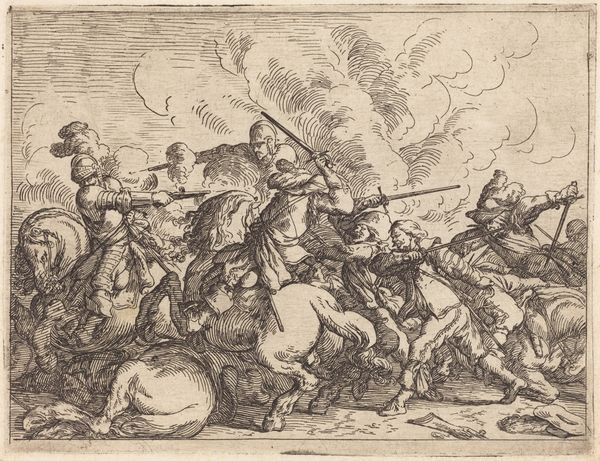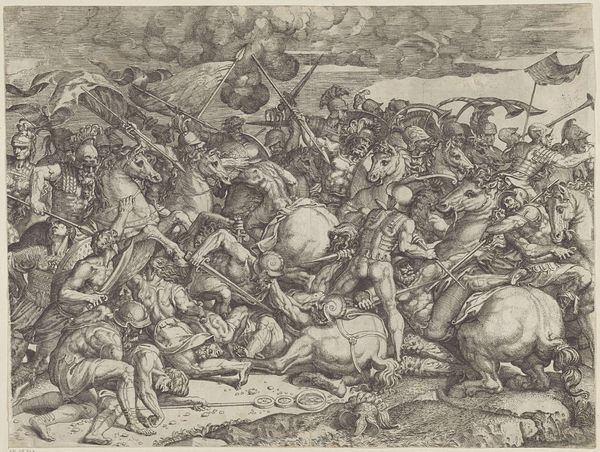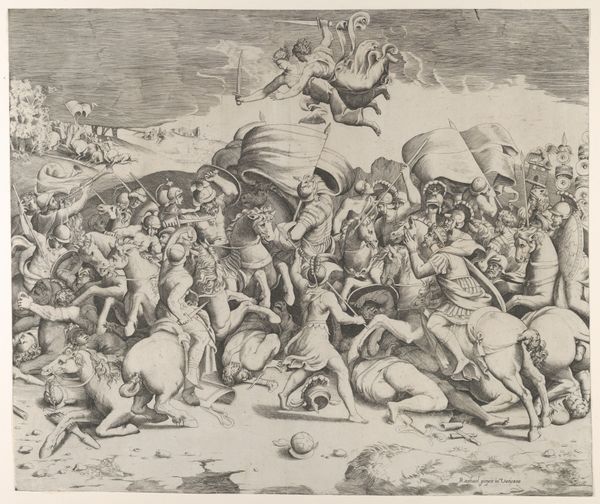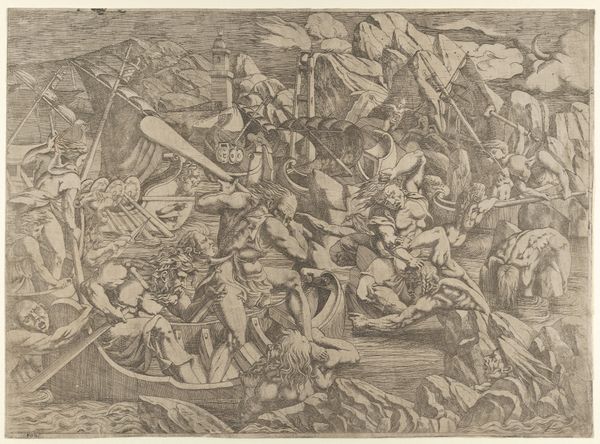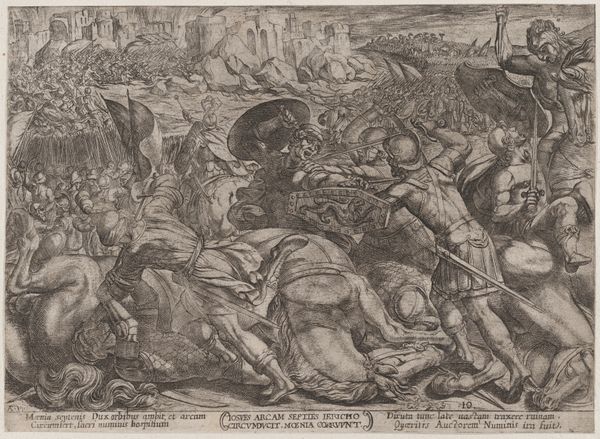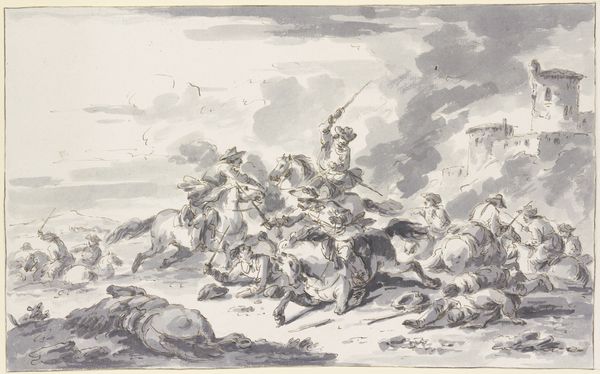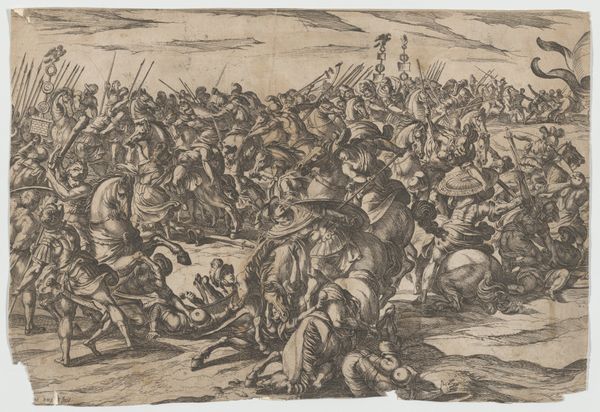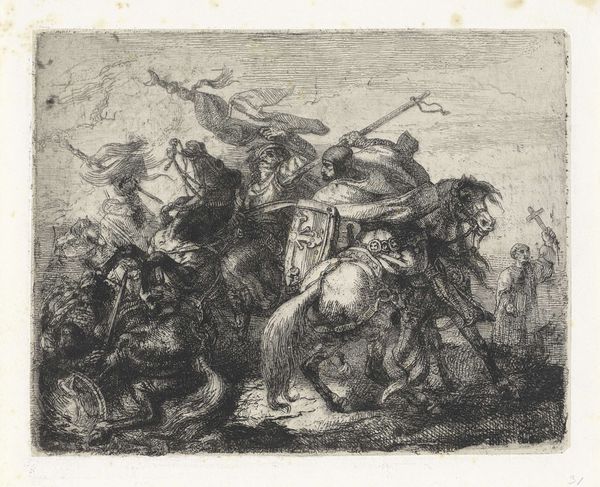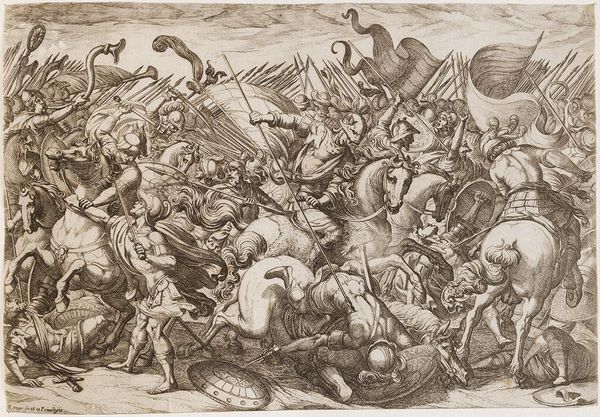
drawing, print, ink
#
drawing
#
ink drawing
#
medieval
#
ink painting
# print
#
landscape
#
figuration
#
ink
#
history-painting
Dimensions: 419 × 571 mm
Copyright: Public Domain
Editor: Here we have Johann Heintz's "Battle of the Milvian Bridge," created in 1612 using ink. The detail is astounding! The chaos of battle really comes through. What stands out to you about this piece? Curator: Immediately, I’m drawn to the sheer labor involved in creating this. Look at the intricate linework achieved with ink; consider the cultural context which elevated printmaking's potential to disseminate narratives of power, legitimizing patrons through these representations of grand battles. This wasn't just art; it was a manufacturing process embedded in political strategies. Editor: Manufacturing… So it’s less about artistic expression and more about the system that allowed it to be made? Curator: Precisely! It encourages us to investigate the socio-economic factors in play, consider where Heintz sourced his materials. Was this commission supporting local craftspeople, or did materials travel across nations, hinting at early globalized exchange? Each stroke implicates complex relations. The "history painting" here becomes material evidence of a production chain. Editor: That completely shifts my perspective! It's easy to get caught up in the artistic skill, but I hadn’t considered the implications of the ink itself or the economic impact of commissioning the artwork. Curator: Exactly! How might this ink drawing also operate as a luxury object within the system of artistic patronage? Notice that battle scenes like this glorify aristocratic power. How is this battle drawing related to elite consumption practices and the validation of authority via displays of craftsmanship? It prompts us to challenge conventional notions of artistic autonomy, seeing instead a tightly knit network where art production serves as the reinforcement of material hierarchies. Editor: So understanding the means of production gives us insight into the society that produced it. I hadn’t thought about art this way before, but it makes perfect sense! Thanks for this different approach. Curator: Indeed. This shifts our analysis towards understanding artwork less as isolated creative achievements and more as cultural products deeply embedded in complex socioeconomic relations. I’m pleased to have helped expand your analysis framework.
Comments
No comments
Be the first to comment and join the conversation on the ultimate creative platform.
